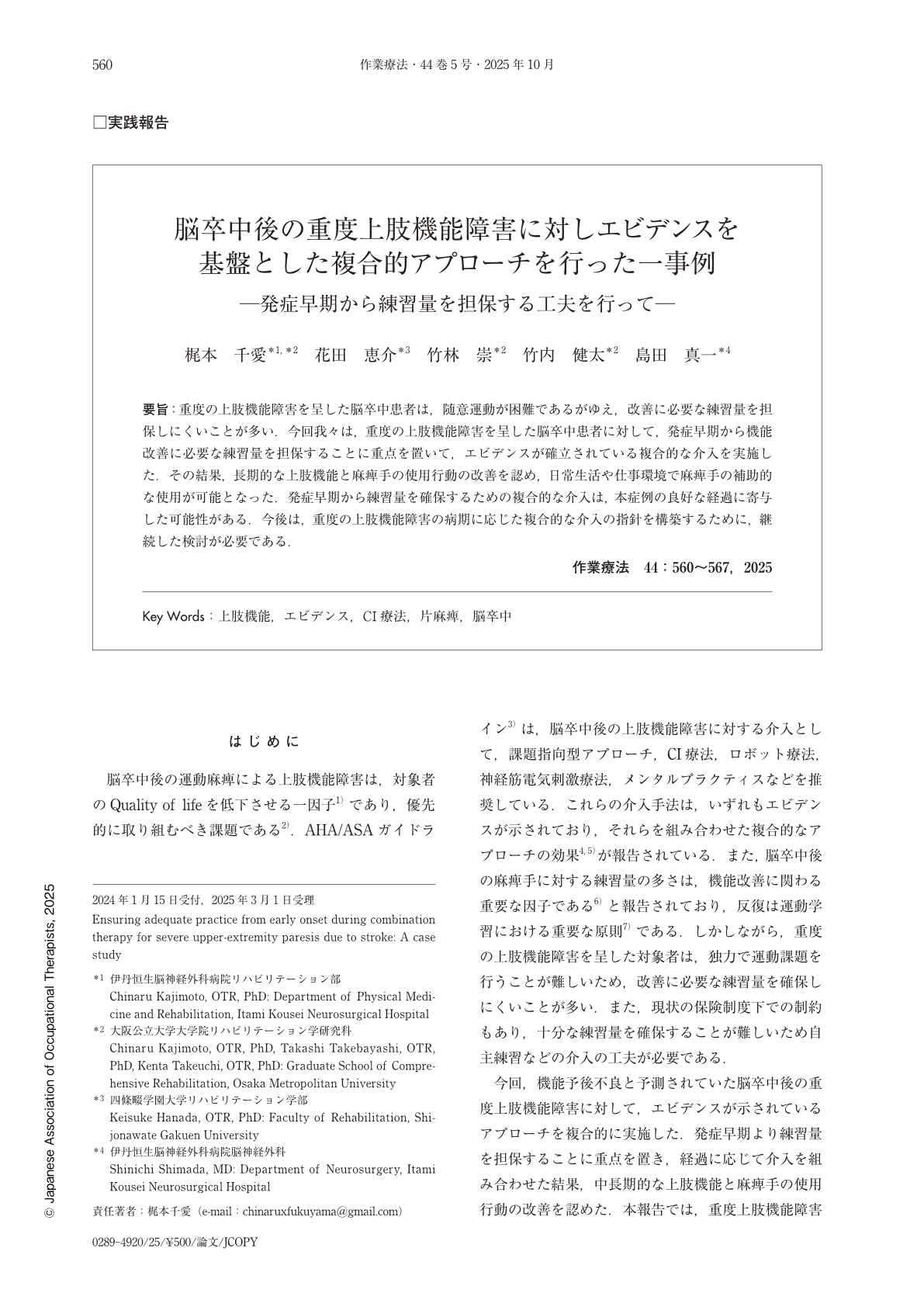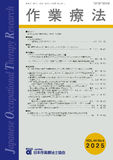Japanese
English
- 販売していません
- Abstract 文献概要
- 1ページ目 Look Inside
- 参考文献 Reference
要旨:重度の上肢機能障害を呈した脳卒中患者は,随意運動が困難であるがゆえ,改善に必要な練習量を担保しにくいことが多い.今回我々は,重度の上肢機能障害を呈した脳卒中患者に対して,発症早期から機能改善に必要な練習量を担保することに重点を置いて,エビデンスが確立されている複合的な介入を実施した.その結果,長期的な上肢機能と麻痺手の使用行動の改善を認め,日常生活や仕事環境で麻痺手の補助的な使用が可能となった.発症早期から練習量を確保するための複合的な介入は,本症例の良好な経過に寄与した可能性がある.今後は,重度の上肢機能障害の病期に応じた複合的な介入の指針を構築するために,継続した検討が必要である.
Previous studies have indicated that stroke patients with severe upper extremity paresis have difficulty in attaining the minimum practice threshold to improve function due to an inability to voluntarily move the paralyzed hand. We conducted multiple evidence-based treatment methods for a stroke patient with severe upper extremity dysfunction to provide adequate practice for improvement in function from the acute phase after stroke onset. The results showed that the patient exhibited long-term improvement in upper extremity function and use of the paralyzed hand, which enabled him to use the paralyzed hand in activities of daily living and at work. Such multiple treatments may positively affect long-term upper extremity function through providing practice from the acute phase after stroke onset. Further studies are required to develop practice guidelines for multiple treatments according to recovery stage of severe upper extremity dysfunction after stroke.

Copyright © 2025, Japanese Association of Occupational Therapists. All rights reserved.


